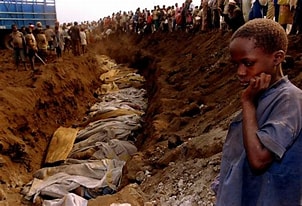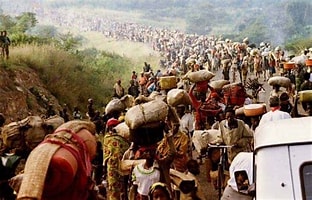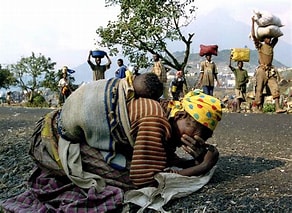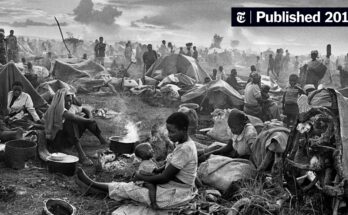The Rwandan Genocide
Introduction
The Rwandan Genocide stands as one of the most harrowing episodes in modern history. In just 100 days, from April 7 to July 19, 1994, an estimated 800,000 people—primarily Tutsis and moderate Hutus—were brutally murdered in a systematic campaign of violence. This genocide was not an isolated event but rather the culmination of decades of ethnic tension between the Hutu and Tutsi populations, exacerbated by colonial rule and political manipulation. As we delve into the events leading up to and during this tragic period, we will uncover the complex factors that contributed to this atrocity, its devastating impact on Rwandan society, and the lessons learned for future generations.
Understanding the Background
Historical Context
Rwanda’s history is marked by a complex interplay of ethnic identities. The two primary groups—Hutus and Tutsis—have coexisted for centuries, with social structures that were fluid until colonial powers intervened.

Colonial Influence
During the late 19th and early 20th centuries, European powers, particularly Belgium, implemented a system of indirect rule that favored the Tutsi minority over the Hutu majority. This favoritism created deep-seated resentment among Hutus, who were often relegated to lower social status.
The Rise of Ethnic Tensions
Post-Colonial Changes
After Rwanda gained independence in 1962, power shifted from Tutsis to Hutus. The newly empowered Hutu government enacted policies that discriminated against Tutsis, leading to violence and mass killings in subsequent years.
The Hutu Revolution
The revolution in 1959 marked a significant turning point. It resulted in thousands of Tutsis being killed or forced into exile. This cycle of violence laid the groundwork for future conflicts.
Prelude to Genocide
The Civil War Begins
In October 1990, the Rwandan Patriotic Front (RPF), composed mainly of Tutsi exiles, invaded Rwanda from Uganda. This invasion reignited ethnic tensions and led to a brutal civil war.
Ceasefire Agreements
A ceasefire was negotiated in 1993 through the Arusha Accords, which aimed to establish a power-sharing government. However, extremist factions within the Hutu population opposed these agreements and sought to maintain their grip on power.
The Assassination of President Habyarimana
On April 6, 1994, President Juvénal Habyarimana’s plane was shot down near Kigali airport. His assassination served as a catalyst for the genocide that followed. Although it remains unclear who was responsible for the attack, extremist Hutus quickly blamed Tutsis and used it as justification for their violent campaign.

The Genocide Unfolds
Initial Outbreak of Violence
The day after Habyarimana’s assassination marked the beginning of widespread killings. Armed militias known as Interahamwe took to the streets, targeting Tutsi civilians and moderate Hutus.
Coordinated Attacks
The genocide was characterized by its brutal efficiency. Militias used machetes and firearms to carry out mass killings. Radio broadcasts incited violence by dehumanizing Tutsis, referring to them as “cockroaches” that needed extermination.
International Response (or Lack Thereof)
Global Indifference
Despite clear signs of impending genocide, the international community largely failed to intervene. Reports from UN peacekeepers on the ground described horrific scenes of violence but received little support from world leaders.
UN Peacekeeping Forces
The United Nations had deployed peacekeeping forces in Rwanda prior to the genocide but limited their mandate. After witnessing the initial wave of killings, many peacekeepers withdrew rather than reinforce their presence.
The Scale of Atrocity
Methods of Killing
The methods employed during the genocide were horrifyingly brutal:
- Machetes: These became symbols of the genocide; they were used extensively due to their availability.
- Mass Shootings: Victims were often rounded up and executed en masse.
- Sexual Violence: Rape was used systematically as a weapon against Tutsi women; estimates suggest that between 250,000 and 500,000 women were raped during this period.
Death Toll Estimates
While estimates vary, it is widely accepted that around 800,000 people were killed during the genocide. Some sources suggest that this number could be higher when considering those who died from related causes or in subsequent violence.
Resistance and Resilience
Acts of Defiance
Amidst this chaos, some individuals risked their lives to protect Tutsis or oppose the violence:
- Hutu Allies: Many moderate Hutus sheltered Tutsi neighbors at great personal risk.
- Resistance Groups: The RPF continued its military campaign against genocidal forces throughout this period.
The Role of Women
Women played a crucial role not only as victims but also as survivors who helped rebuild communities after the genocide. Their resilience became a cornerstone for healing and reconciliation efforts in post-genocide Rwanda.

Liberation and Aftermath
The End of Genocide
By July 1994, RPF forces had taken control of Kigali and defeated government troops. This victory effectively ended the genocide but left behind a country deeply scarred by trauma.
Humanitarian Crisis
In the aftermath, approximately 2 million Rwandans fled to neighboring countries like Zaire (now Democratic Republic of Congo), fearing retribution from RPF forces. Many faced dire conditions in refugee camps.
Trials and Justice
International Criminal Tribunal for Rwanda (ICTR)
In response to these atrocities, the United Nations established the ICTR in November 1994 to prosecute key figures responsible for genocide and other serious violations of international humanitarian law. The tribunal aimed to deliver justice while documenting evidence for historical records.
Domestic Trials
Rwanda also initiated its own trials through Gacaca courts—community-based courts designed to handle cases related to genocide at a grassroots level. While these courts aimed for reconciliation, they faced criticism regarding fairness and transparency.
Lessons Learned from the Rwandan Genocide
Importance of Early Intervention
One significant lesson from this tragedy is the need for timely intervention by international bodies when early warning signs emerge. The failure to act during critical moments allowed atrocities to escalate unchecked.
Promoting Education on Human Rights
Education plays a vital role in preventing future genocides. Raising awareness about human rights abuses can foster tolerance and understanding among diverse communities.
Moving Forward: Reconciliation Efforts
Healing a Nation
Post-genocide Rwanda has focused on reconciliation efforts through community dialogues aimed at healing divisions between Hutus and Tutsis. These initiatives encourage open discussions about past atrocities while promoting unity.
Economic Development
Rwanda has made significant strides in economic development since 1994. By investing in infrastructure, education, and healthcare systems, the country aims to build a brighter future for all its citizens regardless of ethnicity.
Conclusion: Remembering History for a Better Future
The Rwandan Genocide serves as a stark reminder of humanity’s capacity for both cruelty and resilience. By examining this tragic event—the factors leading up to it—the horrors experienced during it—and its aftermath—we gain valuable insights into preventing such atrocities from occurring again.
As we reflect on these lessons learned from Rwanda’s past let us commit ourselves towards fostering understanding compassion among diverse communities worldwide! Together we can build bridges instead walls ensuring that history does not repeat itself!
FAQs
1. What triggered the Rwandan Genocide?
The assassination of President Juvénal Habyarimana on April 6, 1994, triggered widespread violence against Tutsis by extremist Hutu militias.
2. How many people died during the Rwandan Genocide?
Approximately 800,000 people were killed during this period; estimates suggest numbers could be higher depending on various factors considered.
3. What role did international organizations play?
International organizations like the United Nations failed to intervene effectively despite warnings about impending violence; they later established tribunals for justice post-genocide.
4. How did Rwanda recover after such trauma?
Rwanda focused on reconciliation efforts through community dialogues while investing heavily in economic development initiatives aimed at uniting citizens regardless ethnicity.
5. Why is it important to remember events like this?
Remembering tragedies like these helps raise awareness about human rights issues while fostering tolerance among diverse communities—ensuring such atrocities are never repeated again!


